Live Show: The Connotations of Visual Signs
Last updated on November 18, 2005
1 A System of Cultural Objects
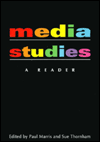 "The level of connotation of the visual sign, of its contextual reference and positioning in different discursive fields of meaning and association, is the point where already coded signs intersect with the deep semantic codes of a culture and take on additional, more active ideological dimensions," Stuart Hall writes in his essay "Encoding/decoding."1 I almost know what he means.
"The level of connotation of the visual sign, of its contextual reference and positioning in different discursive fields of meaning and association, is the point where already coded signs intersect with the deep semantic codes of a culture and take on additional, more active ideological dimensions," Stuart Hall writes in his essay "Encoding/decoding."1 I almost know what he means.
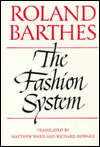 Cultural objects, especially clothing, can no doubt rise to the level of the visual sign, becoming part of media culture even though they do not ordinarily appear in the mass media. And, like any other sign, an object like a hat, when worn, enters a system of cultural signs, gaining meaning in relation to them. More: as it enters the system of cultural objects, as it becomes part of media culture or a component in a public visual field, such as a school, a shopping center, a sidewalk, or a park, it also moves from being an individual form to being a social form. It becomes a piece in a drama, part of a live show: Television.
Cultural objects, especially clothing, can no doubt rise to the level of the visual sign, becoming part of media culture even though they do not ordinarily appear in the mass media. And, like any other sign, an object like a hat, when worn, enters a system of cultural signs, gaining meaning in relation to them. More: as it enters the system of cultural objects, as it becomes part of media culture or a component in a public visual field, such as a school, a shopping center, a sidewalk, or a park, it also moves from being an individual form to being a social form. It becomes a piece in a drama, part of a live show: Television.
Yet an object like a baseball hat can be read not merely as a signifier but also as a text, just as much as the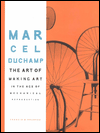 bicycle wheel of Marcel Duchamp, the French Dadaist, can be read as a work of art and thus seen as a text by being placed in a certain context. Either way, as signifier or text, an object like a baseball cap signifies something for me in each context I find it, at each level of observation, even though the signified may change from one context to another, from one perspective to another. It signifies. Thus, I will interpret clothing and similar publicly used objects as texts, with perhaps a multiplicity of meanings, but at any rate meanings that I can decipher on different levels in relation to other objects. Such meanings are, I will assume for now, determined by my own position as a viewer, just as if I were to line a teacup with fur, place it on a stand and say to myself, "Now it's a work of art, and it means ... "
bicycle wheel of Marcel Duchamp, the French Dadaist, can be read as a work of art and thus seen as a text by being placed in a certain context. Either way, as signifier or text, an object like a baseball cap signifies something for me in each context I find it, at each level of observation, even though the signified may change from one context to another, from one perspective to another. It signifies. Thus, I will interpret clothing and similar publicly used objects as texts, with perhaps a multiplicity of meanings, but at any rate meanings that I can decipher on different levels in relation to other objects. Such meanings are, I will assume for now, determined by my own position as a viewer, just as if I were to line a teacup with fur, place it on a stand and say to myself, "Now it's a work of art, and it means ... "
2 Political Interpretation
Given that I have decided to see publicly used objects like clothing and automobiles as texts, I will, in the vein of Fredric Jameson, assume that to wear or use such an object is not only a socially symbolic act but also warrants, as a priority, a political interpretation. Thus in this essay I will forego the use of most other interpretive codes, like the psychoanalytic, the historic, or the stylistic, all of which could be used to derive a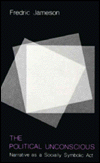 meaning from such objects. I will, however, continue to use aspects of structuralism.
meaning from such objects. I will, however, continue to use aspects of structuralism.
If I see such common objects as warranting a political interpretation, I also realize that their meaning will in turn be driven by my political perspective. For now, it will be Marxist, with an emphasis on economic class. There is some factual basis for allowing the interpretation, in an American context, to be driven by class, or at least by wide differences in income: The rich and the poor in the United States are divided by a deep socioeconomic gulf, an imbalance that has climbed to the highest among industrial nations.2 Faced with such a division, it seems reasonable to contend that certain publicly used objects have come to represent an unconscious, if not conscious, rift between the upper and lower classes. After all, if we allow, as I have been arguing, that certain objects like clothing become signs in a cultural system, and that they gain their meaning in relation to other signs, and that once they enter the system they become social rather than merely individual forms, and that the system is not entirely but forcefully economic -- then the possibility of the unconscious meaning of an object related to economic position increases, at least at the unstable level of meaning that is correlated with the fleeting but public manifestations of economic life, even if the object means something different at each weigh station, no more or no less at one or another: psychoanalytic, historic, stylistic. An endless highway with multiple levels.
Nevertheless: Economic meaning. As with psychoanalytic or linguistic meaning, it may be unconscious. "The sign always to some extent," Ferdinand de Saussure says, "eludes control by the will, whether of the individual or of 

 society: that is its essential nature."3 Saussure meant not only linguistic signs but social ones, too. Common objects, products, things. Hence Roland Barthes. But never mind the unconscious. I am assuming that there are varied and complex structural formations of society; the meaning of cultural objects used in society thus varies at least from context to context, level to level or, perhaps, is ultimately indeterminate across formations. My theoretical point, however, is that the economic level is at times rendered clear by materialist indicators, allowing an undetached observer to develop a hypothesis about the meaning of a cultural object within the economic structure of society by assuming that the influences of the other layers can be momentarily ignored or isolated. Lest you think I'm cheating, it's done all the time: in the scientific rhetoric of the macroeconomic theorist: ceteris paribus. Thus I am not falling prey to Marxist dogma. I am both using Marxism and jettisoning it. Using it as a tool, a filter for capturing a variable; leaving it behind as a meta-narrative. I am not completely opening myself up to a straightforward
society: that is its essential nature."3 Saussure meant not only linguistic signs but social ones, too. Common objects, products, things. Hence Roland Barthes. But never mind the unconscious. I am assuming that there are varied and complex structural formations of society; the meaning of cultural objects used in society thus varies at least from context to context, level to level or, perhaps, is ultimately indeterminate across formations. My theoretical point, however, is that the economic level is at times rendered clear by materialist indicators, allowing an undetached observer to develop a hypothesis about the meaning of a cultural object within the economic structure of society by assuming that the influences of the other layers can be momentarily ignored or isolated. Lest you think I'm cheating, it's done all the time: in the scientific rhetoric of the macroeconomic theorist: ceteris paribus. Thus I am not falling prey to Marxist dogma. I am both using Marxism and jettisoning it. Using it as a tool, a filter for capturing a variable; leaving it behind as a meta-narrative. I am not completely opening myself up to a straightforward 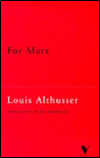

"criticism advanced against classical Marxism itself: its rigid structural determinacy, its reductionism of two varieties -- class and economic; its way of conceptualizing the social formation itself. Marx's model of ideology has been criticized because it did not conceptualize the social formation as a determinate complex formation, composed of different practices, but as a simple (or, as Althusser called it in For Marx and Reading Capital, an `expressive') structure. By this Althusser meant that one practice -- `the economic' -- determines in a direct manner all others, and each effect is simply and simultaneously reproduced correspondingly (i.e., `expressed') on all other levels."4
3 Reality Shift
I've come full circle. As a child all I did was watch television, interrupted only by the occasional war game in the park next to the freeway that ran through my suburban neighborhood in Portland, Oregon. My favorite programs were war movies. But I liked to watch The Brady Bunch, too: I needed moral indoctrination into suburban culture, I needed to know how to act, but I never quite got it right, I never quite learned to fit in. Thus, sitting on an expensive white couch, hoping for another war movie but getting only the Flintstones, I was an incongruity: dressed in battle fatigues, pants held up by a pistol belt.
Too much television. My world, my reality, included television. I spent almost as much time in front of it as I did at school. Beginning early in  life, then, I watched
life, then, I watched 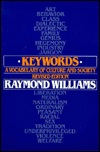
"simulated action, of several recurrent kinds, not just occasionally but regularly, for longer than eating and< for up to half as long as work or sleep; this, in our kind of society, as majority behaviour, is indeed a new form and pressure."5
As such, it radically influenced my view of the world. Later, after I moved into the city and began to wean myself off TV, I found that my reality had shifted: I began watching city life as if it were television. Reality became television because television had become reality. Concrete forms became visual signs.
4 Ubiquitous Things
 The kind of cultural objects I'm talking about are not works of art, like Duchamp's Bicycle Wheel, nor less common, genre items, like "The Romans in Films" or "The Face of Garbo." No.
The kind of cultural objects I'm talking about are not works of art, like Duchamp's Bicycle Wheel, nor less common, genre items, like "The Romans in Films" or "The Face of Garbo." No.
Nor am I talking about the products that the higher-income classes can afford and the lower-income classes cannot: yachts, luxury cars, high-priced designer clothing. Nor am I particularly interested in the differences in quality of everyday items that the rich can buy while the poor cannot. The shades on the windows of Upper East Side condos are probably of a better make than those in most Crown Heights apartments. Rather, I am interested in how the same products or things are used or worn or adorned differently across class lines, even if those lines are shifting, blurred or, worse, arbitrarily drawn. In a way, I am interested in examining the different forms that identical substances take, much as Raymond Williams is concerned not only with the content of communication but also the form of its presentation: "It is not just the content of a programme but its form -- often its deep form -- that is telling you something ..."6 In fact, at times, on television "form is everything."7 The same now that reality is television. Anyway: These objects are, in our society, ubiquitous products, common things: baseball hats, automobiles, T-shirts, dogs. They may be signifiers, among other things, of the user's economic position in society, of his or her socioeconomic identity: A baseball hat, for instance, often signifies power, but it may connote either domination or defiance, depending on how it is worn. Either way, though: power.
5 Baseball Hats
In the poor neighborhoods of Brooklyn, teenagers wear baseball hats. In affluent Greenwich, Conn., Wall Street bankers wear them like a crown as they play golf on the weekends. The hats likewise cover the heads of the many other people who stand between the opposite poles of the socioeconomic spectrum that puts poor Bedford-Stuyvesant teenagers on one end and Cos Cob bankers on the other. The hats are everywhere. The hats themselves differ little from Darien to Queens: Many of them are inscribed on the front with the names of college basketball teams: Rutgers, Kentucky, Syracuse. Other hats display the logos of professional baseball teams. As such, the hats are media: They contain an overt message, an advertisement. To wear one is more than a mere fashion statement, more than the function of keeping the sun from the eyes: It is to participate in the media culture. I'm in Riverside, Conn., near Greenwich, watching television as I sit on the platform of the Metro-North Station, waiting for the train to arrive. A teenager, also waiting for a train to Manhattan, is wearing a dirtied white baseball cap with the bill pulled down tight, conservatively pointing forward. It says UNIVERSITY OF NORTH CAROLINA. The name of the team doesn't matter; it could be Princeton or University of Washington. The color of the hat, though still unimportant, perhaps matters slightly more than the team name it displays.
hats themselves differ little from Darien to Queens: Many of them are inscribed on the front with the names of college basketball teams: Rutgers, Kentucky, Syracuse. Other hats display the logos of professional baseball teams. As such, the hats are media: They contain an overt message, an advertisement. To wear one is more than a mere fashion statement, more than the function of keeping the sun from the eyes: It is to participate in the media culture. I'm in Riverside, Conn., near Greenwich, watching television as I sit on the platform of the Metro-North Station, waiting for the train to arrive. A teenager, also waiting for a train to Manhattan, is wearing a dirtied white baseball cap with the bill pulled down tight, conservatively pointing forward. It says UNIVERSITY OF NORTH CAROLINA. The name of the team doesn't matter; it could be Princeton or University of Washington. The color of the hat, though still unimportant, perhaps matters slightly more than the team name it displays.
Again I'm watching television, this time on Metropolitan Avenue, in Williamsburg, Brooklyn, where another teenager is waiting for a train to Manhattan. Like the Riverside teenager, he's wearing a baseball hat. It too 
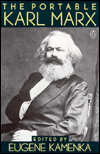 says NORTH CAROLINA but, unlike the other hat, it is not white but dark-colored: navy blue or forest green. More important: The hat is sideways, defiantly so. Thus the hats contain a message coded in the manner in which they are worn. The manner in which it is worn can connote either defiance or domination or neither or both. I decide which based on its relation to all the other signs in the system, my relation to them, and my perspective and ideologies. But my central criterion is the way in which the sign itself is presented, the way in which the hat is worn: Sideways is defiance, straight on and pulled down close to the eyes is sly dominance.
says NORTH CAROLINA but, unlike the other hat, it is not white but dark-colored: navy blue or forest green. More important: The hat is sideways, defiantly so. Thus the hats contain a message coded in the manner in which they are worn. The manner in which it is worn can connote either defiance or domination or neither or both. I decide which based on its relation to all the other signs in the system, my relation to them, and my perspective and ideologies. But my central criterion is the way in which the sign itself is presented, the way in which the hat is worn: Sideways is defiance, straight on and pulled down close to the eyes is sly dominance.
6 Television News
I'm back in front of an old reality, one I know well: the television news. It tells me that several white high school students from Southwestern Connecticut have just been arrested on civil rights charges because they encoded a racial epithet against African-Americans into their high school yearbook. The television shows the police escorting the arrested teenagers to the courthouse or jail: They are wearing baseball caps, white or off white, cropped close against their foreheads, bills pointing straight: An orthodox image.
Now I'm shopping for a new CD at the record store, a hub of media culture. A band called PUBLIC ENEMY has just released a new album. The cover photograph shows the band members in aggressive poses with hostile expressions. Their hands closed into fists. Some of them are wearing baseball hats turned sideways. The band members look defiant, angry. Ready to engage in violent resistance. The caps seem to accentuate this message.
7 Dogs of Fashion, Dogs of War
Recent trends have exalted dogs to the realm of fashion. More and more they are found on the covers and in the pages of fashion magazines, joining the models particularly on urban shoots. Such trends have a glossy allure that leads people to imitation: To put it simplistically, they buy the clothes, and the dog, to be like the beautiful people in the photograph. But why does the choice of dog vary so much and so obviously along class lines? Why, in the Flatiron District, are the fashion dogs Afghans and the like, while in the Southside, they are pit bulls trained to attack? And why, too, in the working-class neighborhoods of Queens, have pit bulls, especially ones trained to be hostile and aggressive, come into fashion? Because pit bulls are dogs of war.
Wait -- aren't pit bulls also popular among some people in the Flatiron District, those brainless, image-is-everything youth who seem most fashionable, who appear at the cutting edge of youth culture? Seen 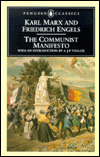 as distinctly postmodern, they are called by some "ravers." They see themselves as individuals, as rebels. How can their appropriation of pit bulls be explained? These postmodern youth, most of whom have middle- to upper-middle-class backgrounds, have also taken to wearing modified working-class clothing: Baseball hats that say DIESEL on them, used overalls that retain their original label: JOE'S AUTO REPAIR. Many wear tattoos as well. At work here is a complex history of appropriation and representation, mediated by many factors along the way. Perceptions of class and of economic oppression are among them. Seen from within the context of class, such an appropriation is a taking of sides, at least in the realm of representation, in a class war that is at once evolving and increasingly being deferred by a fragmentation of interest and identity. Yet: a taking of sides, a detached and convoluted expression of solidarity.
as distinctly postmodern, they are called by some "ravers." They see themselves as individuals, as rebels. How can their appropriation of pit bulls be explained? These postmodern youth, most of whom have middle- to upper-middle-class backgrounds, have also taken to wearing modified working-class clothing: Baseball hats that say DIESEL on them, used overalls that retain their original label: JOE'S AUTO REPAIR. Many wear tattoos as well. At work here is a complex history of appropriation and representation, mediated by many factors along the way. Perceptions of class and of economic oppression are among them. Seen from within the context of class, such an appropriation is a taking of sides, at least in the realm of representation, in a class war that is at once evolving and increasingly being deferred by a fragmentation of interest and identity. Yet: a taking of sides, a detached and convoluted expression of solidarity.
8 T-Shirts and Fatigues
I'm inside my health club on Madison Avenue in Midtown Manhattan, watching television, not only the four hanging from the ceiling at the far end of the gym floor but also the big one all around me, which contains the gym-goers and their T-shirts. Taken together, the shirts read like a list of the most prestigious universities in the country: Harvard, Boston College, Virginia, Cornell, Yale. They are ideological advertisements of a sort, visual signs in the media culture of the gym. Meantime, on the four television sets against the far wall, various sporting events are being broadcast. Reality is being played out all around me. Status, it seems, is measured by the prestige of the university name emblazoned on the T- shirt. Presumably, the rule is that you can wear a T-shirt only with the name of the school you attended. But that's not terribly important. What is important is that the wearing of the T-shirt marks you as a member of a class, a class that is increasingly defined as much by image, knowledge and technological acumen as by assets or property. In this context, the T-shirt communicates a message: power. An ideological certificate for dominant status. Both inside the world of the gym and outside in the world of the economy.
9 Riding on the L Train
Later that same day I'm riding the subway underneath Metropolitan Avenue in Brooklyn, again watching television: Visual signs, messages all around me.
I notice in particular one man sitting near me. He is an perhaps in his late 40s, and he looks as poor me and many of the others who are riding the train home from work in Manhattan to their apartments in Greenpoint, Bushwick, Brownsville, East New York and Canarsie. The man is wearing a fatigue-colored T-shirt. It says: FUTURE LEADERS OF THE WORLD ... The rest of the message is blocked by the bag on his lap. I get off the channel at my stop, walk up the stairs to the street, and head toward home. More television. On it more people are wearing fatigues. Some of the people are in complete military outfits: fatigue-colored pants, belt, jacket. I think I know what the fatigues mean. The people wearing them look angry. Maybe they are angry at me.
10 Notes
1. Stuart Hall, Encoding/decoding, in Media Studies, p. 133.
2. "Study: U.S. Tops Wealth Gap," Associated Press wire story, August 14, 1995.
3. Ferdinand de Saussure, Cours in General Linguistics, trans. Roy Harris (La Salle, Ill.: Open Court, 1983), p. 16.
4. Stuart Hall, "The Problem of Ideology: Marxism without Guarantees," p. 29. Italics in original.
5. Raymond Williams, Raymond Williams on Television: Selected Writings, ed. Alan O'Connor (New York: Routledge, 1989), p. 4.
6. Ibid. p. 209.
7. Ibid. p. 53.